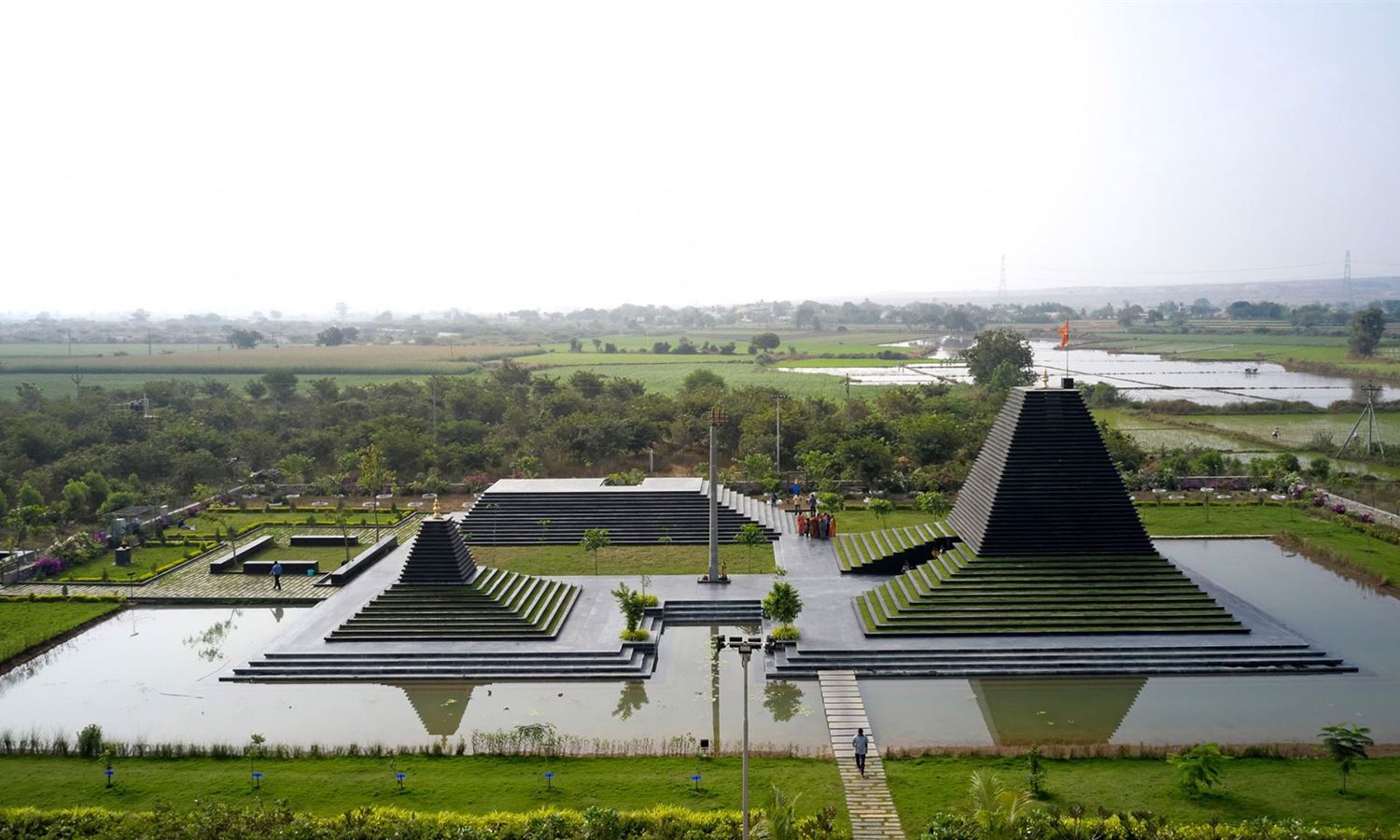The architecture studio created the stepped temples from local black limestone slabs to create a modern take on the traditional Hindu temple forms, and were also used to planted it with greenery on the lower levels to buffer the interiors from the heat.
The complex contains two tower-topped shrines, along with an elongated building that contains a kitchen for preparing offerings, public toilets and the priest's quarters. Alongside the temples is a water tank, known as a Pushkarini.
The larger of the pair of spire-topped temples contains the Balaji shrine, while the smaller temple contains the Varahaswamy shrine.
And integrating a water pool into the temple complex was one of the most challenging elements as the area chosen for the building was relatively arid.
All of the planning was done in dialogue with temple priests who had inputs on what was placed where according to tradition.
